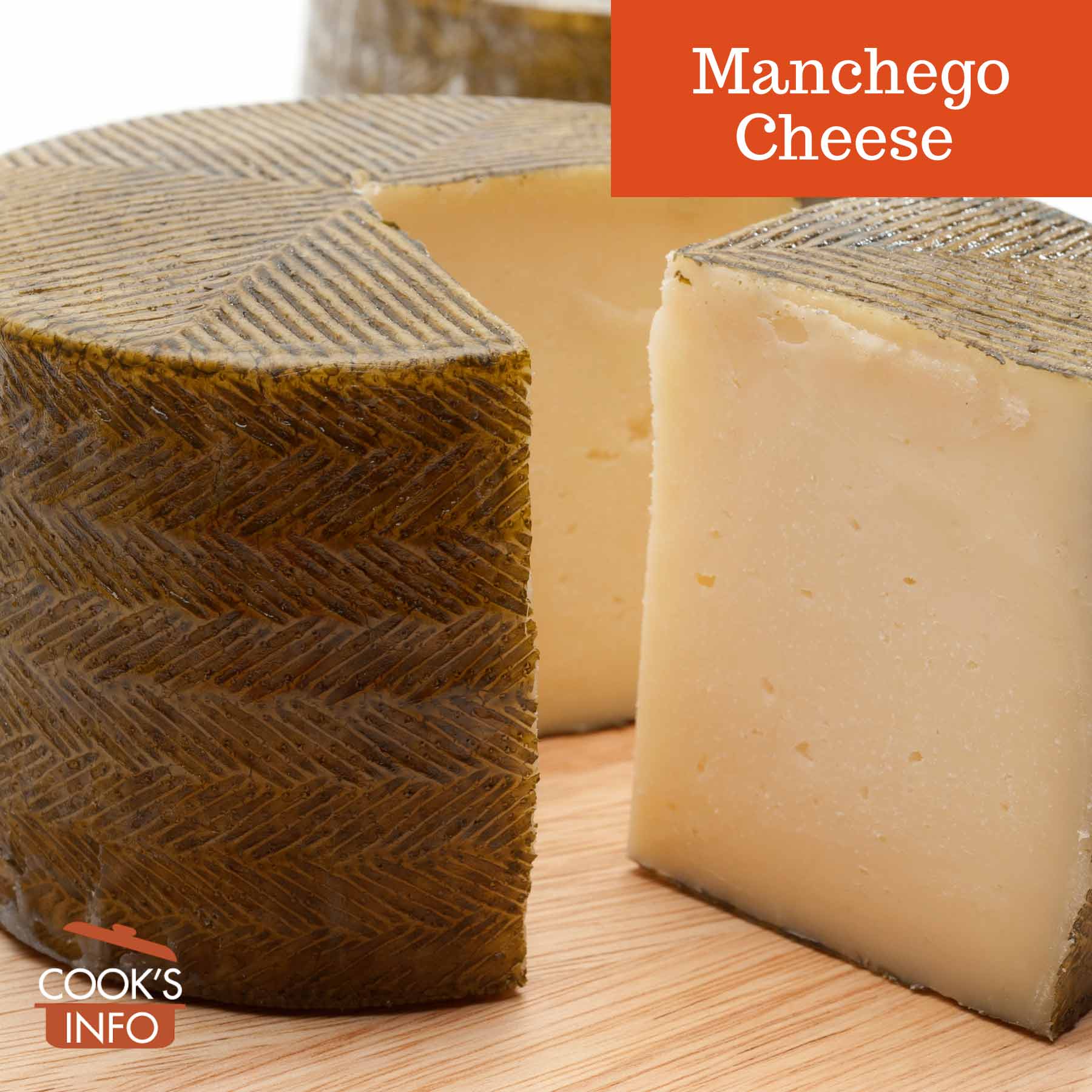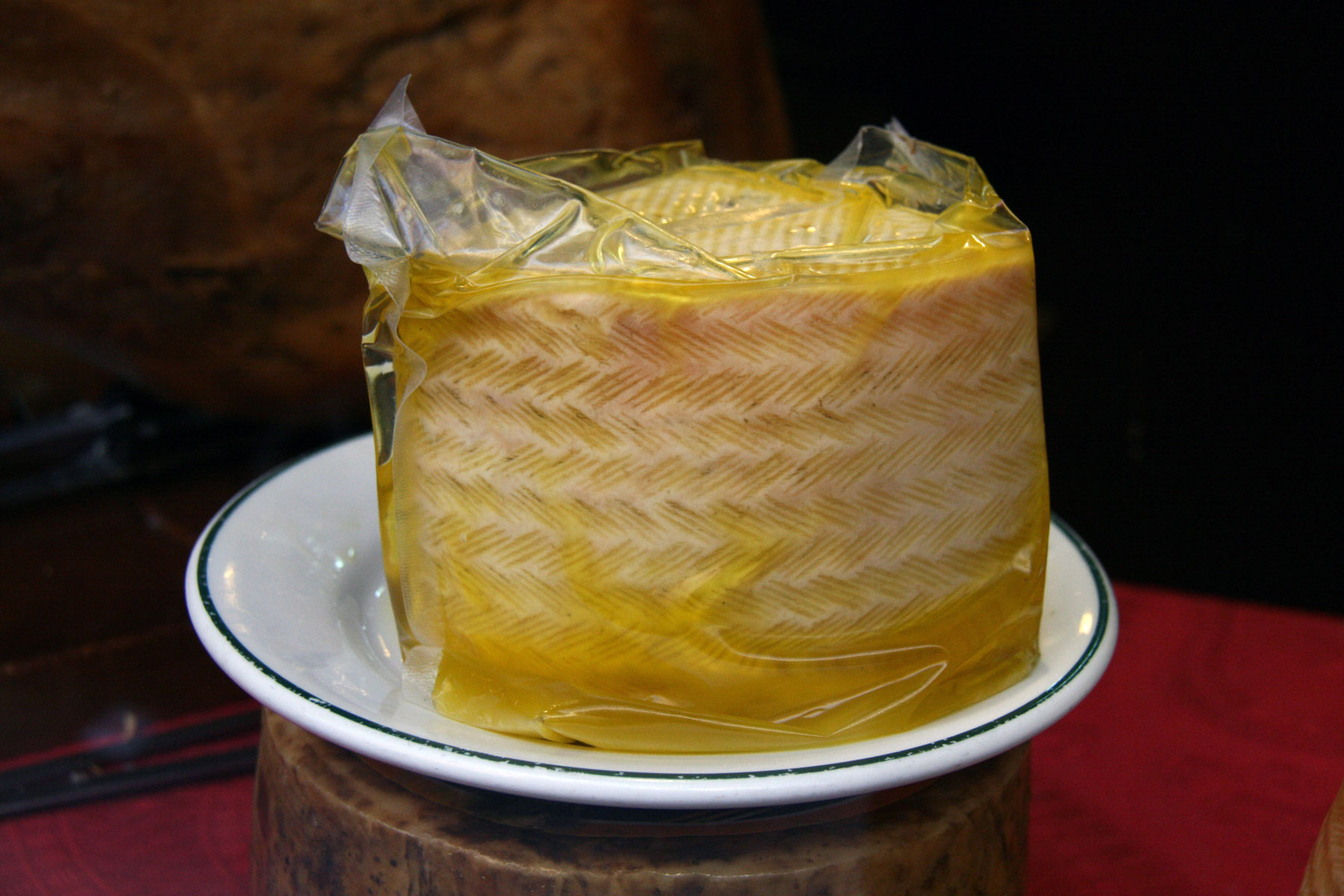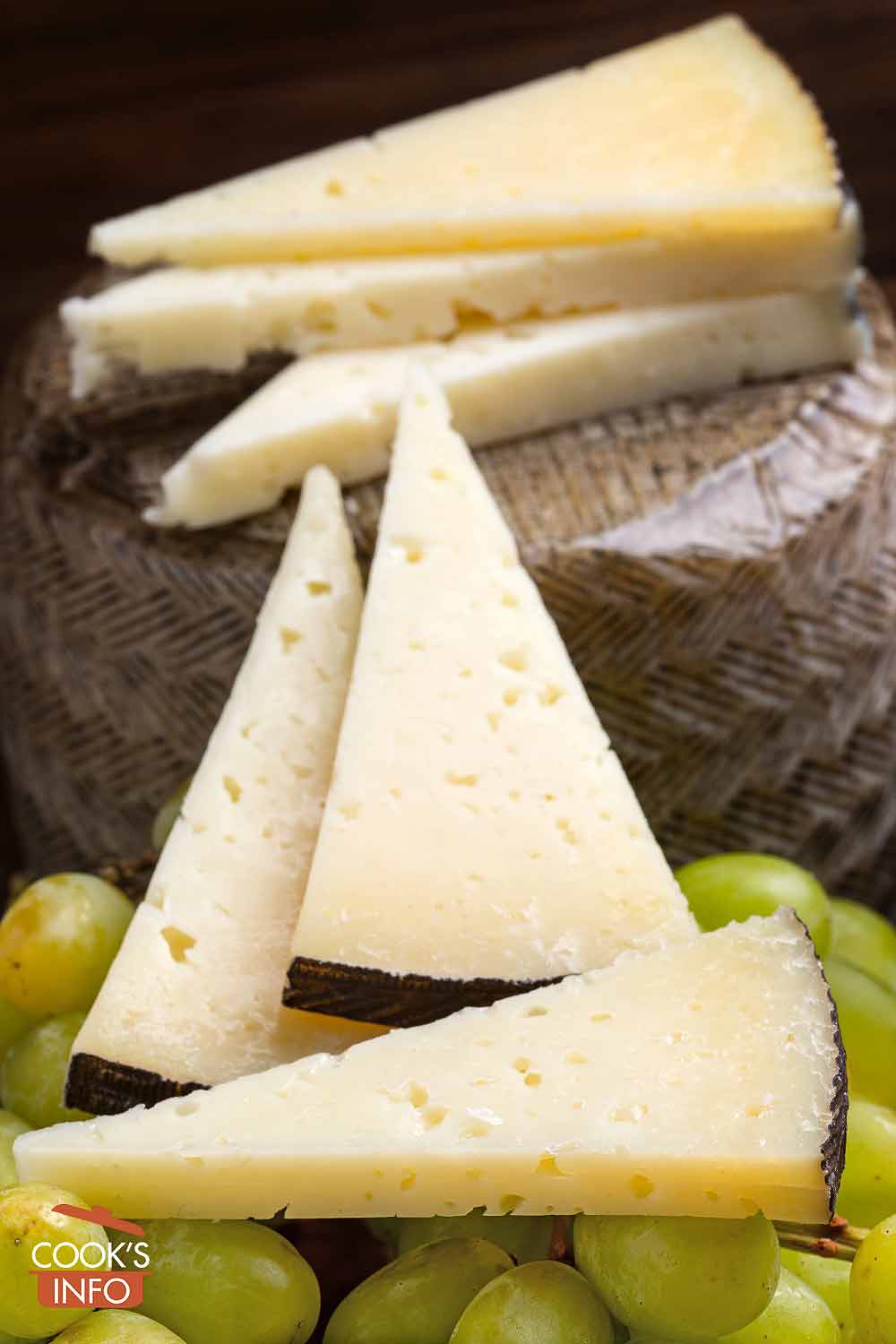
Manchego Cheese wheel. Juan Monino / Getty Images Signature via Canva Pro.
Manchego Cheese is made in the Spanish regions of Castilla La Mancha, Ciudad Real, Albacete, Cuenca and Toledo in central Spain.
It is made from sheep’s milk; some versions pasteurize the milk first.
It is made in wheels that are 20 – 25 cm wide by 10 – 12 cm thick (8 to 10 inches by 4 to 5 inches).
It has a waxed, inedible rind.
Inside, the cheese is golden or ivory colour with small holes, and depending on how aged it is, slightly flaky.
It tastes like a slightly sweet cheddar with a hint of salt in it. The taste starts off mild when the cheese is young, and gets sharper as the cheese is aged.
The cheese can be either a semi-firm cheese, a firm cheese, or a hard cheese, with firmness increasing with age.
- Manchego fresco: aged for less than 3 weeks;
- Manchego curado: aged 3 weeks to 3 months;
- Manchego viejo: aged 9 months to 1 year;
- Manchego en aceite: Manchego viejo washed with olive oil during its aging.

Manchego en aceite (Manchego in olive oil). Tamorlan / wikimedia / 2010 / CC BY-SA 3.0
The rind is embossed with a herringbone-patterned braid that used to be caused by the type of cheese press used, which was made of strands of grass. Even though grass cheese presses are no longer used to form the cheese, the traditional pattern is still impressed into the rind, though now by means of plastic moulds. The pattern is expected by consumers and used by them to recognize the cheese (just as the rind pattern is for Pecorino cheeses).
Spanish Manchego Cheese can be very expensive in North America.
The cheese received its European Protected Designation of Origin status in 1996. [1]Commission Regulation (EC) No 1107/96. Accessed April 2022 at https://eur-lex.europa.eu/legal-content/EN/ALL/?uri=CELEX%3A31996R1107
See also: Manchego Cheese (Mexican), Manchego viejo
Cooking Tips
Can be grated.
Nutrition
Butterfat content: 50%

Manchego Cheese wedges. Juan Monino / Getty Images Signature via Canva Pro.
References
| ↑1 | Commission Regulation (EC) No 1107/96. Accessed April 2022 at https://eur-lex.europa.eu/legal-content/EN/ALL/?uri=CELEX%3A31996R1107 |
|---|

